Pearl Zhu's Blog, page 1251
February 13, 2017
The Digital CIO’s Role in Transaction vs. Transformation
 Becoming a CIO requires technical and adaptive skills, just like any other c-level executive, creating business value is what is expected from CIOs. However, the pace of changes in IT would force more CIOs into transformation-oriented roles, because IT plays a significant role in the digital transformation of the company. It doesn’t mean we should say that being transactional is bad and transformation is good, in the absolute. In fact, an effective leader needs to have both transformation and transaction levels and styles of thinking, behaving and acting.
Becoming a CIO requires technical and adaptive skills, just like any other c-level executive, creating business value is what is expected from CIOs. However, the pace of changes in IT would force more CIOs into transformation-oriented roles, because IT plays a significant role in the digital transformation of the company. It doesn’t mean we should say that being transactional is bad and transformation is good, in the absolute. In fact, an effective leader needs to have both transformation and transaction levels and styles of thinking, behaving and acting.
Transformation is what and why, and transaction is about how: Transformation is the leapfrogging changes, implying the fundamental changes from collective thought processes to underlying functions. Transactional" refers to operational transactions, taking an input at one end and churning it out at the other with processes in between. A “Transformational" means redesigning existing transactions to something new, being innovative/ creative and also introducing completely new transactions hopefully with a strategy that serves the organization well. It's easy enough to churn out the same old things even with minor modifications but to undertake real transformational change requires innovative leadership, know-how, and step-wise approach. It also doesn't mean transformational CIOs are superior to transactional CIOs in every perspective, and both attributes - transactional and transformative are needed in a CIO, otherwise, you will either end up with static uncompetitive technology or with the completely loose cannon who can throw the organization’s technology into turmoil.
Transaction is to do things right; a transformation is to do a right thing: And just transactional running the systems is going to shrink with emergent digital technology. Once IT is seen as strategic rather than tactical, IT can be transformational when the opportunity arises and it is appropriate to seize it. Until then, the rest of the business will feel that if the transactional CIO is talking, it's because there are problems, not opportunities, and won't want to listen. Any c-level executives have to carry on a conversation in their discipline and have strategic discussions with their peers. Here are some difference between transformational IT and transactional IT:A transaction has a short-range view; a transformation has a long-range perspective.A transaction needs plans, budgets, and designs detail steps. A transformation develops vision and strategies to achieve it.A transaction is tactics, A transformation is a strategy.A transaction is about how; a transformation is what and why.A transaction follows standard operating procedures. A transformation needs strategic guideline and policy.A transaction focuses on goals for improvement. A transformation focuses on goals of innovation.A transaction is inside a box; A transformation might need work cross box.A Transaction seeks continuity. A transformation seeks to change.A transaction focuses on a bottom line; a transformation is on the horizon.
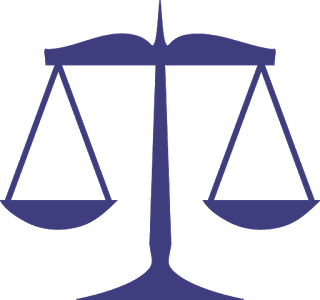 The CIO requires being confident to create and manage changes, being both strategic and hands-on The CIO must adopt the attitudes and styles of strategic leadership (transformational way), and also, must be willing to engage in conversations with his/her staff on some occasions on details (a transactional way) so the staff believes the CIO is not that far away from reality. It requires a leadership substance of vision and style that more closely matches the action-oriented style of senior executives and also has multidimensional intelligence, with some of the analytic and synthetic qualities that are commonly associated with successful executives.
The CIO requires being confident to create and manage changes, being both strategic and hands-on The CIO must adopt the attitudes and styles of strategic leadership (transformational way), and also, must be willing to engage in conversations with his/her staff on some occasions on details (a transactional way) so the staff believes the CIO is not that far away from reality. It requires a leadership substance of vision and style that more closely matches the action-oriented style of senior executives and also has multidimensional intelligence, with some of the analytic and synthetic qualities that are commonly associated with successful executives. IT leaders shifting from transactional managers to transformational leaders take thought leadership, transcendent wisdom, and trans-disciplinary skill. As many organizations are at an inflection point in digital transformation, the transformation-driven, effective CIOs can help to orchestrate such change in vertical organizational structure, horizontal working structure, and social structure through the latest digital technology. Follow us at: @Pearl_Zhu
Published on February 13, 2017 23:13
Closing the Gap of Traditional Management vs. Holistic Digital Management
 At the industrial age, the majority of organizations have been operated with classic management discipline, which is based on a tacit assumption that organizations can be compared to machines as a mechanical system. Traditional management is inside out process oriented and efficiency driven. Consequently, silo functions and divide-and-conquer methodologies are promoted both in organizational design as well as task responsibility or accountability distribution. Nowadays, businesses are steadily moving into the digital era with characteristics of hyper-connectivity and interdependence, how to close the gaps between classic management and digital management in order to enforce cross-functional collaboration and improve business effectiveness and maturity?
At the industrial age, the majority of organizations have been operated with classic management discipline, which is based on a tacit assumption that organizations can be compared to machines as a mechanical system. Traditional management is inside out process oriented and efficiency driven. Consequently, silo functions and divide-and-conquer methodologies are promoted both in organizational design as well as task responsibility or accountability distribution. Nowadays, businesses are steadily moving into the digital era with characteristics of hyper-connectivity and interdependence, how to close the gaps between classic management and digital management in order to enforce cross-functional collaboration and improve business effectiveness and maturity?
Traditional management is to apply the reductionistic methodology to manage the achieve business efficiency; and holistic digital management is to apply Systems Thinking to ensure the overall health of business ecosystem: If the majority of organizations at the industrial age are manipulated by silo thinking and hierarchical management style. This is to be expected because most “classic” management principles date from the industrial revolution. The consequence of all of this is that “classic” management doesn’t take a systemic approach to management. Digital means holism and interconnectivity. It’s important for leaders and managers to learn how to think the systemic wholeness. This digital wholeness comprises various media that are each functionally contrary to the unitive, fluid and seamless nature of the whole. The holistic digital management is about leveraging Systems Thinking to set general management principles for understanding how the “part” interconnected with the”whole.” It’s about seeing interrelationships rather than isolated things, for understanding patterns of changes rather than static “snapshots.”
Most of the organizations at industrial era runs in the functional silos, and digital management focuses on broader collaboration: Digital organizations arise when the scale of the interrelations, interactions, or interrelational interactions surpasses our brain's capacity to be able to do whatever it does with smaller scales. Because of traditional management, the business units often do not work in collaboration, as they are driven by a culture of silos, they fight for the limited resource in order to do what they believe is “locally” right instead of working together in order to do what is “globally right.” As Peter Drucker well stated: Classic management is about doing things right, it isn’t about doing the right thing, that’s leadership. Digital management styles include- Interrelational: management processes being developed to help reduce the tensions, frictions, and conflicts that arise. Interactional management processes being developed to help communicate objects and concepts; and interrelational interactions management processes being developed that help to communicate objects and concepts that are being used, or that are wanted by other parties. Organizational management processes being developed that help to live together despite the disjunction process that took place as the size of the group exceeded your brain's threshold.
 Many industrial organizations are inside out, process driven; but digital organizations are outside-in, and customer-centric: Traditional management runs in silos; silos introduce lots of delays, waste, queues, and bottlenecks. Just think of the time/energy/money wasted by this pattern of blaming others. The negative reactions to the problems come from a state of distrust, disengagement, and disempowerment. Avoiding these patterns begins with a belief and understanding behaviors have ripple effects and that we all tend to be drawn into situations which force us to learn and grow, and focus on PROBLEM-SOLVING. The digital management focuses on cultivating the positive attitude with a problem-solving mindset. When people decide together to change something they don't look first for the negatives. They see the positives, the goals, the benefits, the vision. That drives them to work through the negatives together to find solutions, not problems. Holistic management (a Greek word meaning all, whole, entire, total) is a systems thinking approach to managing resources, recognizing initiatives which take a comprehensive, anticipatory, and design approach to radically advance human well-being and the health of business ecosystems.
Many industrial organizations are inside out, process driven; but digital organizations are outside-in, and customer-centric: Traditional management runs in silos; silos introduce lots of delays, waste, queues, and bottlenecks. Just think of the time/energy/money wasted by this pattern of blaming others. The negative reactions to the problems come from a state of distrust, disengagement, and disempowerment. Avoiding these patterns begins with a belief and understanding behaviors have ripple effects and that we all tend to be drawn into situations which force us to learn and grow, and focus on PROBLEM-SOLVING. The digital management focuses on cultivating the positive attitude with a problem-solving mindset. When people decide together to change something they don't look first for the negatives. They see the positives, the goals, the benefits, the vision. That drives them to work through the negatives together to find solutions, not problems. Holistic management (a Greek word meaning all, whole, entire, total) is a systems thinking approach to managing resources, recognizing initiatives which take a comprehensive, anticipatory, and design approach to radically advance human well-being and the health of business ecosystems.
It is imperative to close the modern management gap, transform the traditional silo management style focusing on power and control to holistic digital management practices for harness communication and collaboration. While the characteristics of digitalization are hyper-connectivity, hyper-complexity, and interdependence; and with increasing speed of changes, the traditional management is just not fit enough for speeding up and toning the business capability to respond to the opportunities and risks, and ensure the organization as a whole is optimal than the sum of pieces.
Follow us at: @Pearl_Zhu
Published on February 13, 2017 23:10
February 12, 2017
The Popular Quotes Collection XI of “Digital Master” Book Series
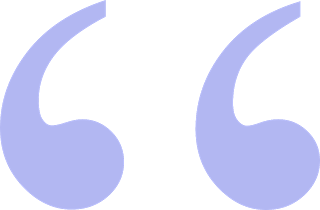 “Digital Master” is the series of guidebooks (13+ books) with five pillars to perceive the multifaceted impact digital is making to the business and our society, help forward-thinking organizations navigate through the digital journey in a systematic way, and avoid “rogue digital.” Here is the set of popular quotes for conveying the digital vision and sharing the unique insight about the digital transformation.
“Digital Master” is the series of guidebooks (13+ books) with five pillars to perceive the multifaceted impact digital is making to the business and our society, help forward-thinking organizations navigate through the digital journey in a systematic way, and avoid “rogue digital.” Here is the set of popular quotes for conveying the digital vision and sharing the unique insight about the digital transformation.
 It Innovation: Reinvent It for the Digital Age by Pearl Zhu
It Innovation: Reinvent It for the Digital Age by Pearl Zhu
Only functioning as a whole brain, IT can strike the right balance between stability and agility; creativity and standardization; innovation and risk intelligence.― Pearl Zhu, It Innovation: Reinvent It for the Digital Age
IT needs to be super-glue to bridge business silos and enable holistic decision-making.― Pearl Zhu, It Innovation: Reinvent It for the Digital Age
The business’s potential depends on how it unleashes its information potential and talent potential.― Pearl Zhu, It Innovation: Reinvent It for the Digital Age
A digital IT organization with highly cognitive connectivity is like the nerve system of the business to collect, process and update information.― Pearl Zhu, It Innovation: Reinvent It for the Digital Age
IT with both high “digital IQ and EQ” can proactively build all different management capabilities and play a different role to the situation at hand.― Pearl Zhu, It Innovation: Reinvent It for the Digital Age
 Unpuzzling Innovation: Mastering Innovation Management in a Structural Way by Pearl Zhu
Unpuzzling Innovation: Mastering Innovation Management in a Structural Way by Pearl Zhu
Innovation comes from the Latin, “Innovare” - It means to change or alter things that already exist.― Pearl Zhu, Unpuzzling Innovation: Mastering Innovation Management in a Structural Way
Create and nurture an environment in your organization where curiosity is encouraged, and creative thinking is rewarded.― Pearl Zhu, Unpuzzling Innovation: Mastering Innovation Management in a Structural Way
You can feel creative tension when you sense the freedom to be creative, the harmony not via compliance only, but through brainstorming. ― Pearl Zhu, Unpuzzling Innovation: Mastering Innovation Management in a Structural Way
Innovators find more viewing spots than the rest. ― Pearl Zhu, Unpuzzling Innovation: Mastering Innovation Management in a Structural Way
An innovator has an obligation to her vision, to be authentic and to think strategically.― Pearl Zhu, Unpuzzling Innovation: Mastering Innovation Management in a Structural Way
 Change Insight: Change as an Ongoing Capability to Fuel Digital Transformation by Pearl Zhu“The organizational fit is the good balance of the fitting attitude and misfit thinking.” ― Pearl Zhu, Change Insight: Change as an Ongoing Capability to Fuel Digital Transformation“The big “WHEN” about change is not just a particular moment, but a thought-out planning with clear defined timelines.” ― Pearl Zhu, Change Insight: Change as an Ongoing Capability to Fuel Digital Transformation“Change is just the vehicle to elevate you toward the ultimate destinations.” ― Pearl Zhu, Change Insight: Change as an Ongoing Capability to Fuel Digital Transformation“Wisdom in the workplace means to inspire creativity, learning, and progression, but discourage unprofessionalism and negativity.”― Pearl Zhu, Change Insight: Change as an Ongoing Capability to Fuel Digital Transformation“Change Management = The human side of change.” ― Pearl Zhu, Change Insight: Change as an Ongoing Capability to Fuel Digital Transformation“For humans to move to higher ground, we must have different views, but share the common ground as well.”― Pearl Zhu, Change Insight: Change as an Ongoing Capability to Fuel Digital TransformationFollow us at: @Pearl_Zhu
Change Insight: Change as an Ongoing Capability to Fuel Digital Transformation by Pearl Zhu“The organizational fit is the good balance of the fitting attitude and misfit thinking.” ― Pearl Zhu, Change Insight: Change as an Ongoing Capability to Fuel Digital Transformation“The big “WHEN” about change is not just a particular moment, but a thought-out planning with clear defined timelines.” ― Pearl Zhu, Change Insight: Change as an Ongoing Capability to Fuel Digital Transformation“Change is just the vehicle to elevate you toward the ultimate destinations.” ― Pearl Zhu, Change Insight: Change as an Ongoing Capability to Fuel Digital Transformation“Wisdom in the workplace means to inspire creativity, learning, and progression, but discourage unprofessionalism and negativity.”― Pearl Zhu, Change Insight: Change as an Ongoing Capability to Fuel Digital Transformation“Change Management = The human side of change.” ― Pearl Zhu, Change Insight: Change as an Ongoing Capability to Fuel Digital Transformation“For humans to move to higher ground, we must have different views, but share the common ground as well.”― Pearl Zhu, Change Insight: Change as an Ongoing Capability to Fuel Digital TransformationFollow us at: @Pearl_Zhu
Published on February 12, 2017 23:11
Bridging the Gaps between Questioning and Answering
 In the industrial age with information scarcity, the followers ask leaders how to do, and leaders are expected to always answer the questions. However, with today’s digital convenience, knowledge is often only a click away, the differentiation between leaders and followers are not based on who ask questions and who answers. As the matter of fact, more often, leaders should frame great questions, and followers need to practice independent thinking and provide alternative answers with the fresh point. To put simply, as we steadily move into the deep digital reality, it is the time to bridge the gaps between questioning and answering; every great question is like the magnet to attract all sorts of answers, and every answer should also evoke more questions to deepen the understanding. It's not a matter of whether you should ask or tell more. It's important to do what is right in a situation; discussing things as appropriate. For every digital leader or professional today, there is time to ask, and there is time to answer. And people who innovate are changed pros and not afraid to challenge the status quo and they have the unlimited curiosity to ask questions.
In the industrial age with information scarcity, the followers ask leaders how to do, and leaders are expected to always answer the questions. However, with today’s digital convenience, knowledge is often only a click away, the differentiation between leaders and followers are not based on who ask questions and who answers. As the matter of fact, more often, leaders should frame great questions, and followers need to practice independent thinking and provide alternative answers with the fresh point. To put simply, as we steadily move into the deep digital reality, it is the time to bridge the gaps between questioning and answering; every great question is like the magnet to attract all sorts of answers, and every answer should also evoke more questions to deepen the understanding. It's not a matter of whether you should ask or tell more. It's important to do what is right in a situation; discussing things as appropriate. For every digital leader or professional today, there is time to ask, and there is time to answer. And people who innovate are changed pros and not afraid to challenge the status quo and they have the unlimited curiosity to ask questions.
All leaders need to ask questions, but they also need to assist in providing answers, to bridge the gap between questions and answers: Good leaders will do both naturally. A good attitude of a leader should aspire to have confidence in both asking questions and giving answers rather equally. Just because leaders are in that position, doesn't always mean they necessarily know what is best. True leaders have always been intrigued and they have always asked questions, to themselves, to circumstances, to books, to experiences, and to other fellow people. Effective leaders navigate their leadership through continuous asking: “Who, Who not, Where, Where not, What, What not, When, When not, Why, Why not, How, and How not.” Confidence comes from being comfortable in your role as a leader, acknowledging that your job as a leader is not just to provide answers but facilitate solutions. Only when they see and understand the problem from the other person's perspective, are they able to give an answer that makes sense to the team? So make sure you ask good questions that elicit the best out of your employees. Effective leaders want to understand the issue, so they ask. They will always ask questions to people around them, get views of everybody, learn about the subject when necessary and then use their leadership qualities to resolve the situation or make effective decisions.
Bridging the gap of questioning and answering could help build leadership reputation: Leaders could gain more trust and respect by asking the tough questions; leaders should also practice expert power to provide premium answers. They can build leadership reputation via both Q&As. Effective leaders always ask tough questions to collect enough input: It is almost like confusing true leadership with position or rank as they need input from a variety of sources before making decisions. By doing so, the team feels that the leader is interested in helping get the work done, The more interactive the conversations are, the more valued everyone feels. From a management perspective, leaders may be inflexible about the goal but they are extremely flexible with the roadmap for attaining that goal. They will take alternative path if they will get to the goal quicker and more effectively. As a result, they are always looking for options and the only way to discover options is to ask.
 Improving leadership maturity via mastering questioning and being open for the variety of answers : Q&As are the two sides of the same coin. Think one of the fundamental capacities of a leader, with or without role authority, is that they are open learners, meaning that they are willing to engage the ambiguity of the context in businesses of what contributes to the long-term health of the organization. Digital leaders or professionals need to become more comfortable and confident in asking questions. Since curiosity is a natural aspect of learning, confidence in asking questions would be one measure of one's capacity to learn. Asking questions tells us that we are still curious, still willing to learn, which is one of the characteristics of effective leaders in the digital era of information abundance and fast pace of changes. How can those in authority evolve from their current ego-centric sense of self toward developing a greater, more human sense of self? In doing so, coupled with the development of their critical thinking ability, all of these wonderful ideas like listening and developing trust, respecting others, engaging the minds of others, will naturally emerge, and improve leadership maturity.
Improving leadership maturity via mastering questioning and being open for the variety of answers : Q&As are the two sides of the same coin. Think one of the fundamental capacities of a leader, with or without role authority, is that they are open learners, meaning that they are willing to engage the ambiguity of the context in businesses of what contributes to the long-term health of the organization. Digital leaders or professionals need to become more comfortable and confident in asking questions. Since curiosity is a natural aspect of learning, confidence in asking questions would be one measure of one's capacity to learn. Asking questions tells us that we are still curious, still willing to learn, which is one of the characteristics of effective leaders in the digital era of information abundance and fast pace of changes. How can those in authority evolve from their current ego-centric sense of self toward developing a greater, more human sense of self? In doing so, coupled with the development of their critical thinking ability, all of these wonderful ideas like listening and developing trust, respecting others, engaging the minds of others, will naturally emerge, and improve leadership maturity.
Bridging the gaps between questioning and answering is to bridge the learning gap. How can all of us learn that answers are not ends, but the means for greater inquiry? If there are no questions, there will be no answers. The more we question, the more we know, we learn and thereafter we teach and spread our learning. In substance, leadership is all about future, about change, about progress and innovation, direction and dedication. Leaders set principles, open for criticism, and take the risk for innovation, and they practice leadership disciplines via both questioning and answering.
Follow us at: @Pearl_Zhu
Published on February 12, 2017 23:10
CIOs’ Three Personas to Enforce Leadership Influence
 Due to the changing nature of technology, the omnipresence of technology and exponential growth of information, IT plays a crucial role leading changes and driving digital transformations. The IT leadership role also continues to be reimagined, refined, refreshed and reenergized. Today’s CIOs have multiple roles to play and take broader leadership responsibilities in transforming their organizations.
Due to the changing nature of technology, the omnipresence of technology and exponential growth of information, IT plays a crucial role leading changes and driving digital transformations. The IT leadership role also continues to be reimagined, refined, refreshed and reenergized. Today’s CIOs have multiple roles to play and take broader leadership responsibilities in transforming their organizations.
CIOs as “Chief Inquisitiveness Officer”: Traditional IT organizations were run as an isolated function non-IT leaders are lack of interest to understand further, and IT leaders are perceived as technique geeks who speak different languages and take the order from the business. In order to bridge the gap between IT and business, digital CIOs need to become “Chief Inquisitiveness Officer,” and “Chief Interaction Officer,” to ask tough questions and enforce IT-business communication. Because many times, you have to break down the status quo and break through the conventional wisdom, to keep informative and inquisitive. Ask the right questions for ensuring doing the right things before doing things right. During the leadership interaction, disagreements will arise naturally. So asking questions means you truly want to know the answers and there is a certain honesty about it which propels you forward as a leader. The inquisitive leaders not only ask deep “WHY”s to diagnose the root cause of problems but also ask the positive “WHY NOT” to spur creativity. They ask “What if we do things in a new way,” or, “How can I make things better for the whole?” Great IT leaders are great thinkers, and visionaries, they will always ask questions to people around them, customers, business partners, get views of everybody, learn about the subject when necessary and then leverage their leadership qualities to resolve the situation in a better way.
CIOs as “Chief Information Officer”: Back to basic, CIOs are Chief Information Officer, and digital CIOs are information master. IT is the steward of business data & information. Data by itself is meaningless until it’s interpreted and analyzed. IT plays the critical role in information lifecycle management to transform raw data - information - insight/intelligence - wisdom. As digital technologies mature and IT becomes better understood by most of the enterprises, information will get better and become more valuable, and it will become a digital business capability IT can build on. CIOs need to focus on the information content and context; how that information can be tapped from the underlying data and be utilized to turn it into valuable strategic insight, how the information and insight can be penetrated through the business and be actively used in managing business processes and shaping the business capabilities to execute business strategy solidly. Today, CIOs are not just managing IT to keep the lights on but they are managing the information to enable enterprises to become nimble and gain the competitive edge.

CIOs as Chief Innovation Officer: CIOs as Chief Innovation Officer are one of the most needed personas of digital CIOs. Innovation is about thinking differently, acting differently, delivering differently, adding value differently. The new IT digital playbook isn't for the faint of heart. CIOs need to rise above the status quo and take on a new set of activities that have them involved in the strategy development process from the get-go.Though every executive should have an opportunity and responsibility to participate in the innovation dialog and to come up with innovative ideas. IT, on the other hand, has much more of opportunities to enable incremental top-line and bottom-line value across the business, not just within IT, but across the business scope. In many organizations, IT is the custodian of solutions and data assets that can be applied in new and different ways to generate massive business value that far exceeds what other functions can incrementally bring to the table. CIOs, need to become innovators, as opposed to outside the box, altering or changing the frame of reference to create previously unconsidered solutions, to run IT as an innovation hub, to equip people with the latest technology and needed information, to make the right decision at every level, and to capture insight and foresight for the future of business.
Today’s CIOs have multiple personas. When CIOs climb the upward leadership maturity path, and then their IT organizations will also move up to unleash the full digital potential and achieve a high-performance result. It will directly drive the business’s overall capabilities to compete for the long-term growth, and elevate the overall business maturity to the higher level.Follow us at: @Pearl_Zhu
Published on February 12, 2017 23:06
February 11, 2017
The Monthly “Unpuzzling Innovation” Book Tuning Feb. 2017
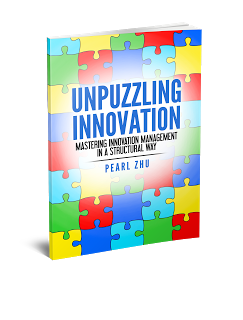 Digital is the age of innovation. And innovation is what leads to differentiation. There are many ways to differentiate and, therefore, there are many ways to pursue innovation. Talking of innovation is not new nowadays, everybody, every organization now is talking about innovation. It's been at or near the top of the business or economics agenda for a long time. However, there’re a lot of confusions about innovation and there is no magic sauce to guarantee its success. Back to basic, what is innovation, the more you look into this topic, the more difficult to give a definition of innovation, as it is such a broad topic? One of the good definitions of innovation is: "to transform the novel ideas into commercial success.” In essence, innovation is, "intentional novelty bringing sustainable benefit."
Digital is the age of innovation. And innovation is what leads to differentiation. There are many ways to differentiate and, therefore, there are many ways to pursue innovation. Talking of innovation is not new nowadays, everybody, every organization now is talking about innovation. It's been at or near the top of the business or economics agenda for a long time. However, there’re a lot of confusions about innovation and there is no magic sauce to guarantee its success. Back to basic, what is innovation, the more you look into this topic, the more difficult to give a definition of innovation, as it is such a broad topic? One of the good definitions of innovation is: "to transform the novel ideas into commercial success.” In essence, innovation is, "intentional novelty bringing sustainable benefit."
“Unpuzzling Innovation” Monthly Book TuningWho Should be Put in the Right Position for Accelerating Innovation: We all know innovation is important because it is the lifeblood of any business. But compare the upcoming digital era to the previous industrial era, innovation is becoming more intensive with broader content or enriched context; there are both radical innovation and incremental innovation; hard innovation and soft innovation; The speed of change is expedited, so does the speed of innovation. Innovation is the buzzword everyone is talking about it. But from innovation management perspective, who should be put in the right position for accelerating innovation?
Apply Discipline to Innovation Innovation is how to transform novel ideas to achieve their business values. Innovation management has overall very low success rate. Innovations in the digital era are coming at seemingly much fast space, with changes and potential disruptions, and therefore, innovation management also becomes more complex and dynamic. Innovation is not serendipitous, how to apply discipline to innovation for improving its success rate?
How to Build Innovation Strength in your Organization Digital innovation has a broader spectrum with hybrid nature, it is the incremental improvement- radical innovation continuum. It has broader scope beyond just a new product or service, radical innovation brings something that was not existing before. Incremental Innovation is more about taking something someone created and adding to it, changing it, adapting it; or to leverage the latest technology for business improvement. A fine tuned innovation is not a serendipity, how to build innovation strength in your organization?.
Digital Innovation Premium Many say digital is the age of innovation. With the increasing speed of changes and hyper-fierce competitions, at present days, innovation is the “Must Have” element of the business strategy if the organization want to stay competitive on the market. Digital organizations are complex adaptive living systems, which are comprised, in part, of people who are also complex adaptive living systems, all such systems function, grow and prosper by continually learning, innovating, adapting and evolving. Creativity has just become indispensable, and innovation turns to be a competitive necessity. From a business management perspective, how to build a high competitive organization with digital innovation premium?
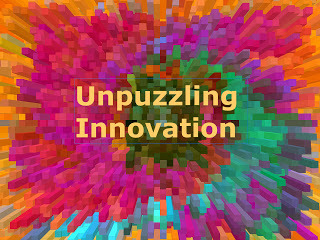 Innovation as a Strategic Capability Innovation becomes simply "creating value by solving simple or complex problems." Today, innovation can happen anywhere, anytime; it expands both horizontally and vertically. It’s the state of mind to think and do things from a new angle, it’s the business’s unique capabilities to gain a competitive advantage in the face of fierce competition and business dynamic. Generally speaking, innovation is to connect à solution to an unmet need, usually creating a win-win situation for both parties in term of value creation.?
Innovation as a Strategic Capability Innovation becomes simply "creating value by solving simple or complex problems." Today, innovation can happen anywhere, anytime; it expands both horizontally and vertically. It’s the state of mind to think and do things from a new angle, it’s the business’s unique capabilities to gain a competitive advantage in the face of fierce competition and business dynamic. Generally speaking, innovation is to connect à solution to an unmet need, usually creating a win-win situation for both parties in term of value creation.?
The “Future of CIO” Blog has reached 1.7 million page views with about 3500+ blog posting in 59+ different categories of leadership, management, strategy, digitalization, change/talent, etc. The content richness is not for its own sake, but to convey the vision and share the wisdom. Blogging is not about writing, but about thinking; it’s not just about WHAT to say, but about WHY to say, and HOW to say it. It reflects the color and shade of your thought patterns, and it indicates the peaks and curves of your thinking waves. Unlike pure entertainment, quality and professional content takes time for digesting, contemplation and engaging, and therefore, it takes time to attract the "hungry minds" and the "deep souls." It’s the journey to amplify your voice, deepen your digital footprints, and match your way for human progression.
Follow us at: @Pearl_Zhu
Published on February 11, 2017 23:27
How to Close Perception Gaps?
Perception is the way one's eyes see the surroundings and one's mind interpret it.

Perception is one's interpretation of the reality. It is as we see, observe and experience as defined by our mental "band-pass filters.”Perception is one's interpretation of the reality, so it is very subjective and varies from person to person. When we are “mindful,” we not only see, but also perceive; we not only live but also experience; this will have an effect on others and how we interact with the surrounding. But what are the gaps between perception and reality? How to overcome bias caused by prepositioned perceptions, how to close those perception based gaps and make the positive impact on your surrounding?
One’s perception matters because it affects on how you are going to respond to “what happened,” and which influence you would make to the surroundings: What "really" happened is irrelevant. It is only your perception of what happened that is relevant, and therefore how you are going to respond to "what happened." We live in an actual reality that we might never truly experience. In effect, our perception is always flawed - it is not absolutely true, but it is what we believe to be true. So the positive mind often has more positive thinking about the environment; but the out of dated perception is like time glue that keeps you still while the rest of the world moves on which creates another problem-resentment and more negative thinking. Therefore, the conventional wisdom or stereotyping leads to those outdated perceptions which stifle the human progress, even drag the world backward, and cause more social problems. As wise said, people are different, not because we look different, but because we think and perceive differently.
Being stick to who you are - be authentic to close the gap between self perception and how others’ perception of you: No two person's realities will be totally identical at a given time. Our perception is, in turn, an interpretation based on our conditioning, beliefs, insight, or surroundings, etc, leading us to judge others, all of which may be positive or negative - depending on one's perception. Often when innovators perceive they are in the idea wonderland to keep creativity flow and thrive to become who they want to be; in “reality” or through the others’ perception, they are in fact in the primitive tropical jungle, have to deal with many strange creatures through wield competitions. They have to survive from those distorted perceptions or negative thinking. People’s perception reflects who they are and which lens do they apply to make the judgement of others. Even though everyone lives in actual reality, we experience actual reality through the filter of our personal realities, which, again, is ultimately based on individual perception. Therefore, it is important to be be authentic - being who you are, don’t be distracted or discouraged by others’ outdated perception; also don’t be restricted by conventional wisdom, be open minded to perceive others and the ever fast changing digital dynamic.
 "Sow positive thoughts=create positive change: An individual’s perception is his/her personal reality, and this reality is transient. One's perception can be altered and influenced by variables and tests introduced to his/her reality, ultimately changing the individual’s reality permanently or temporarily. Your perception affects your world and therefore what you project on the world, which in turn impacts others positively or negatively. Having positive thoughts doesn't necessarily change external world, but it does help you see the good that is already there. When the collective perception is more closer to the perception of the most advanced mind (the master mind), human as the whole can accelerate the progress; if the opposite is true, unfortunately the society still gets stuck in the outdated perception, far behind the digital era we are stepping in. If you look for the good in things, you will find them and if you look for the bad in things you will find them too. Consistent negativity "is needlessly harmful." Sow negativity/negative thoughts = negative change.
"Sow positive thoughts=create positive change: An individual’s perception is his/her personal reality, and this reality is transient. One's perception can be altered and influenced by variables and tests introduced to his/her reality, ultimately changing the individual’s reality permanently or temporarily. Your perception affects your world and therefore what you project on the world, which in turn impacts others positively or negatively. Having positive thoughts doesn't necessarily change external world, but it does help you see the good that is already there. When the collective perception is more closer to the perception of the most advanced mind (the master mind), human as the whole can accelerate the progress; if the opposite is true, unfortunately the society still gets stuck in the outdated perception, far behind the digital era we are stepping in. If you look for the good in things, you will find them and if you look for the bad in things you will find them too. Consistent negativity "is needlessly harmful." Sow negativity/negative thoughts = negative change.
A perceptive mind is subjective, but can be open enough to embrace other minds’ perception as well. Having open mind and learning attitude allows you gaining cognizant of the different perceptions of the world, and having gratitude allows you being more positive and gives you the energy to overcome bias or other perception-based obstacles. It is as important as daily hygiene and needs to be a part of your daily routine. We should all sow the positive thoughts and creativity seeds to bridge perception gaps and make the leap of the digital transformation.
Follow us at: @Pearl_Zhu

Perception is one's interpretation of the reality. It is as we see, observe and experience as defined by our mental "band-pass filters.”Perception is one's interpretation of the reality, so it is very subjective and varies from person to person. When we are “mindful,” we not only see, but also perceive; we not only live but also experience; this will have an effect on others and how we interact with the surrounding. But what are the gaps between perception and reality? How to overcome bias caused by prepositioned perceptions, how to close those perception based gaps and make the positive impact on your surrounding?
One’s perception matters because it affects on how you are going to respond to “what happened,” and which influence you would make to the surroundings: What "really" happened is irrelevant. It is only your perception of what happened that is relevant, and therefore how you are going to respond to "what happened." We live in an actual reality that we might never truly experience. In effect, our perception is always flawed - it is not absolutely true, but it is what we believe to be true. So the positive mind often has more positive thinking about the environment; but the out of dated perception is like time glue that keeps you still while the rest of the world moves on which creates another problem-resentment and more negative thinking. Therefore, the conventional wisdom or stereotyping leads to those outdated perceptions which stifle the human progress, even drag the world backward, and cause more social problems. As wise said, people are different, not because we look different, but because we think and perceive differently.
Being stick to who you are - be authentic to close the gap between self perception and how others’ perception of you: No two person's realities will be totally identical at a given time. Our perception is, in turn, an interpretation based on our conditioning, beliefs, insight, or surroundings, etc, leading us to judge others, all of which may be positive or negative - depending on one's perception. Often when innovators perceive they are in the idea wonderland to keep creativity flow and thrive to become who they want to be; in “reality” or through the others’ perception, they are in fact in the primitive tropical jungle, have to deal with many strange creatures through wield competitions. They have to survive from those distorted perceptions or negative thinking. People’s perception reflects who they are and which lens do they apply to make the judgement of others. Even though everyone lives in actual reality, we experience actual reality through the filter of our personal realities, which, again, is ultimately based on individual perception. Therefore, it is important to be be authentic - being who you are, don’t be distracted or discouraged by others’ outdated perception; also don’t be restricted by conventional wisdom, be open minded to perceive others and the ever fast changing digital dynamic.
 "Sow positive thoughts=create positive change: An individual’s perception is his/her personal reality, and this reality is transient. One's perception can be altered and influenced by variables and tests introduced to his/her reality, ultimately changing the individual’s reality permanently or temporarily. Your perception affects your world and therefore what you project on the world, which in turn impacts others positively or negatively. Having positive thoughts doesn't necessarily change external world, but it does help you see the good that is already there. When the collective perception is more closer to the perception of the most advanced mind (the master mind), human as the whole can accelerate the progress; if the opposite is true, unfortunately the society still gets stuck in the outdated perception, far behind the digital era we are stepping in. If you look for the good in things, you will find them and if you look for the bad in things you will find them too. Consistent negativity "is needlessly harmful." Sow negativity/negative thoughts = negative change.
"Sow positive thoughts=create positive change: An individual’s perception is his/her personal reality, and this reality is transient. One's perception can be altered and influenced by variables and tests introduced to his/her reality, ultimately changing the individual’s reality permanently or temporarily. Your perception affects your world and therefore what you project on the world, which in turn impacts others positively or negatively. Having positive thoughts doesn't necessarily change external world, but it does help you see the good that is already there. When the collective perception is more closer to the perception of the most advanced mind (the master mind), human as the whole can accelerate the progress; if the opposite is true, unfortunately the society still gets stuck in the outdated perception, far behind the digital era we are stepping in. If you look for the good in things, you will find them and if you look for the bad in things you will find them too. Consistent negativity "is needlessly harmful." Sow negativity/negative thoughts = negative change.
A perceptive mind is subjective, but can be open enough to embrace other minds’ perception as well. Having open mind and learning attitude allows you gaining cognizant of the different perceptions of the world, and having gratitude allows you being more positive and gives you the energy to overcome bias or other perception-based obstacles. It is as important as daily hygiene and needs to be a part of your daily routine. We should all sow the positive thoughts and creativity seeds to bridge perception gaps and make the leap of the digital transformation.
Follow us at: @Pearl_Zhu
Published on February 11, 2017 23:23
Three Practices to Run a High-Performance Digital IT
 We have transitioned from a static industrial age with information scarcity to the digital economy of knowledge, innovation, and hyperconnectivity, with this shift has come to a change in organizational forms away from the traditional rigid hierarchies managed through command and control to a more networked and collaborative style. IT plays a significant role in weaving all important business elements and orchestrate a digital symphony. So, what are the best and next practices for running a high-effective digital IT?
We have transitioned from a static industrial age with information scarcity to the digital economy of knowledge, innovation, and hyperconnectivity, with this shift has come to a change in organizational forms away from the traditional rigid hierarchies managed through command and control to a more networked and collaborative style. IT plays a significant role in weaving all important business elements and orchestrate a digital symphony. So, what are the best and next practices for running a high-effective digital IT?
IT should spend more resources upon crafting unique business capabilities and capturing business growth opportunities: IT is a key enabler to build almost all differentiated digital business capabilities nowadays.Both information and technology become the key ingredient in building business capabilities that differentiate the company from its competition in supporting the company objectives. However, it’s not easy because it requires changing the culture and getting the buy-in of IT resource. IT oversees business processes which underpin organizational capabilities, It is one thing to have the IT resource aligned with the business strategies/ objectives, to enable business execution. In addition, all of IT spending must be looked at through an investment lens, provide a framework for thoughtful and informed decision-making. So CIOs should be able to position and maintain the IT organization to ensure it addresses both "IT effectiveness" and "IT efficiency," to enable capability-based strategy management, also help improve the entire company’s effectiveness and business competency.
Prioritization is critical to both improving performance and forcing people to become more innovative for problem solving: A company has finite resources to apply to get the best yield possible to meet stakeholders’ expectation. So there’re always some constraints for businesses to balance a healthy portfolio of “run, grow, and transform,” to explore the new opportunities or deploy the new ideas. So the business objective shouldn't be to work on only those projects for which you have staff, it should be to maximize what you can accomplish through creative leverage of your talent pool. In addition, prioritization brings transparency to the organization, creating internal competition among new ideas and projects. Prioritization is critical, as the alternative is a land grab for resources. Prioritization helps to focus the strategy of the organization, which has huge benefits in terms of execution. Prioritization forces people to be more creative, to come up with better ideas, and manage them in a structural way. Without effective communication and prioritization skills, the business often doesn't understand how IT can help, and IT doesn't know what the business needs. And then the gaps between IT and business are enlarged and IT perhaps just keeps “busyness,” without solving real issues.
 Making effective measurement is also important to keep improving IT performance: You can only manage what you measure. Though the situation varies, there are a couple of key steps can be shared in improving IT performance across vertical sectors. How do you measure that a breadth of best practice is in place to leap the business growth both now and in the future? The success of IT is not for its own sake, but to ensure the entire business success. It’s also important to measure IT success in meeting the business purpose and vision. IT metrics need to evolve to something that matters to the business audience, at the same time that "business sentiment" needs to get put into something more tangible, such as optimize processes, or improve productivity. Your measures should cover all areas that contribute to value creation including service quality, employee engagement, customer satisfaction and financial outcomes. Selecting the right key performance indicator is one of the most important steps in measurement because this process includes to answering why you are choosing that, how you will use them and whether you have enough resources to manage data.
Making effective measurement is also important to keep improving IT performance: You can only manage what you measure. Though the situation varies, there are a couple of key steps can be shared in improving IT performance across vertical sectors. How do you measure that a breadth of best practice is in place to leap the business growth both now and in the future? The success of IT is not for its own sake, but to ensure the entire business success. It’s also important to measure IT success in meeting the business purpose and vision. IT metrics need to evolve to something that matters to the business audience, at the same time that "business sentiment" needs to get put into something more tangible, such as optimize processes, or improve productivity. Your measures should cover all areas that contribute to value creation including service quality, employee engagement, customer satisfaction and financial outcomes. Selecting the right key performance indicator is one of the most important steps in measurement because this process includes to answering why you are choosing that, how you will use them and whether you have enough resources to manage data. Information technology should be seen by any business as a “digital transformer and focus on setting principles and developing the next practices for improving business effectiveness, efficiency, performance, and agility. The payoff of IT digital transformation is not just for the quick win, but to build the long-term business competency.
Follow us at: @Pearl_Zhu
Published on February 11, 2017 23:20
February 10, 2017
CIOs as “Chief Inquisitive Officer: A set of Q&As on Bridging IT-Business Chasm
 Modern CIOs face many challenges, it is not sufficient to only keep the lights on. Regardless of which industry or the nature of organization you are in, being a digital leader will need to master the art of creating unique, differentiating value from piles of commoditized technologies and take advantage of the emergent digital trend as well; digital CIOs also have multiple personas, “Chief Innovation Officer,” “Chief Insight Officer,” “Chief Improvement Officer,” “Chief Information Officer,” and here, we discuss CIOs as “Chief Inquisitive Officer,” with a set of Q&As to lead digital transformation.
Modern CIOs face many challenges, it is not sufficient to only keep the lights on. Regardless of which industry or the nature of organization you are in, being a digital leader will need to master the art of creating unique, differentiating value from piles of commoditized technologies and take advantage of the emergent digital trend as well; digital CIOs also have multiple personas, “Chief Innovation Officer,” “Chief Insight Officer,” “Chief Improvement Officer,” “Chief Information Officer,” and here, we discuss CIOs as “Chief Inquisitive Officer,” with a set of Q&As to lead digital transformation. Is Business & IT Gap ‘Artificial’: The “gap” between business and IT is always a hot debate, and the conclusion is also controversial, some say, the gap is definitely shrinking, as IT is gradually becoming engrained into every aspect of business these days due to the internet, technology developments etc. The clear cut divide that used to be there between IT and business in the olden days is vanishing fast; the opposite opinion is that indeed the gap is deepened because the “shadow IT”-business bypassing IT oversight to order SAAS service on their own, causes serious governance issue and communication gaps.?
Business vs. IT the battle rages on --Where do you stand?: There’re quite a few classic business vs. IT debates last decade long: Does IT still Matter? What will happen to CIO role? 'Business vs IT': where do you stand for? Is the IT/business silo-ing a chronic problem in many organizations? Or have enterprises moved in the right direction, with a few hangers-backs? Yes, the battle rages on, also because 'we' continue to perpetuate the discussion. The positive side is: such debates may help business & IT do more reflection via pondering deeper.
Is the Gap between Business and IT Shrinking?IT is better integrated with the business than ever before. However, IT remains quite distinct in terms of performance metrics, structure, career path, etc. there are still numerous debates about “He said, She said” in CIO forums, Is the gap between business and IT shrinking?
How to bridge the Disconnect between business and IT? IT connection with the LOB has been a discussion and need for a long time now. It's no secret that this need is still unfulfilled and requires serious attention. Most IT organizations can barely keep up with their existing workloads to even think about ways to transform themselves. CIOs and IT leaders of today are realizing these needs, but they too are under the age old time, resource, and budget crunch to make integration a priority. Outside of taking advantage of technology to ease the daily IT pressures, what other recommendations would you suggest for CIOs to do to remove the non-core needs so that they and their team can focus on the core--and advance IT beyond the walls of "just IT"?
 Why does Silo Happen and How to Bridge It? There are different definitions of the silo, by its nature, it’s about isolation. The segmenting or sectioning of work by skill, knowledge, type, etc, is a necessary component of complex work or large workplaces. But silo mentality is fundamentally about keeping the mind static and keeping the people separate rather than keeping work separate.The digital CIOs need to reimagine IT as the business growth engine and lead changes via inquiries. They need to keep asking open-ended questions such as, "Why? Why not? What If?" They have to focus on guiding the company through the digital transformation, and create unique business value because IT is the significant element of any differentiated business capability and the defining factor for competitive advantage.
Why does Silo Happen and How to Bridge It? There are different definitions of the silo, by its nature, it’s about isolation. The segmenting or sectioning of work by skill, knowledge, type, etc, is a necessary component of complex work or large workplaces. But silo mentality is fundamentally about keeping the mind static and keeping the people separate rather than keeping work separate.The digital CIOs need to reimagine IT as the business growth engine and lead changes via inquiries. They need to keep asking open-ended questions such as, "Why? Why not? What If?" They have to focus on guiding the company through the digital transformation, and create unique business value because IT is the significant element of any differentiated business capability and the defining factor for competitive advantage. Follow us at: @Pearl_Zhu
Published on February 10, 2017 23:37
CIOs as “Chief Interaction Officer”: Building Digital Clusters to Accelerate Business Transformation
 The world is leapfrogging from taxonomy to folksonomy. The digital convenience we enjoy today breaks down the physical territories and brings unprecedented opportunities to reinvent business and unleash human potential. Today’s digital business are becoming more interconnected and interdependent with its macro-environment by engaging conversation with partners, customers, community group, industry expertise, and IT plays a crucial role in building the backbone of digital business with hyperconnectivity and high-responsiveness. So, CIOs as “Chief Interaction Officer,” how to build digital clusters to accelerate such a business transformation?
The world is leapfrogging from taxonomy to folksonomy. The digital convenience we enjoy today breaks down the physical territories and brings unprecedented opportunities to reinvent business and unleash human potential. Today’s digital business are becoming more interconnected and interdependent with its macro-environment by engaging conversation with partners, customers, community group, industry expertise, and IT plays a crucial role in building the backbone of digital business with hyperconnectivity and high-responsiveness. So, CIOs as “Chief Interaction Officer,” how to build digital clusters to accelerate such a business transformation?
Enable hyper-connectivity to foster scalable collaboration: Businesses are using social platform and collaboration tools to improve customer relationship, engage employees, monitor online customer behavior, create social communities to brainstorm ideas, and develop multi-channel communications. It is excellent to bring digital technologies to this realm, to urge a sense of connection via virtual "conversations" beyond the confines of a blighted neighborhood. Collaboration is at its essence, the intellectual harmony between humans. Organizations also start to leverage those tools to make formerly invisible patterns of social interaction more visible; and apply such information to boost social engagement, find segmentation of populations with certain characteristics and understand their impact on others, or what turns into certain actions such as purchasing, collaboration, and encourage behavior changes, with the ultimate goal of performance management. Social collaboration also helps pinpoint to who knows what within or even beyond your organization, based on social influence and action rather than assertion, allow organizations to identify the strength of these relationships and how information flows between the groups. And enable companies to target group influencers who can best affect decisions.
Build digital clusters to harness innovation: Highly active digital organizations are building the resource-rich innovation hubs/clusters across the business ecosystem to encourage new conversations that galvanize inspiration and gain traction on a powerful theme of renewal and growth, co-create new knowledge, stimulate innovative ideas, and co-solving many tough problems. Try to digitally connect key resources/assets in their vicinity/context. In doing so, you can create the collegiality and "shared context for learning." That, in turn, should lead to "inspirations," that will further fuel more collaboration in innovative projects and enterprises. In addition, innovation must be a multi-disciplinary effort. The innovation collaboration teams embraced multiple disciplines, and understand how systems work, and this yielded competitive advantage.
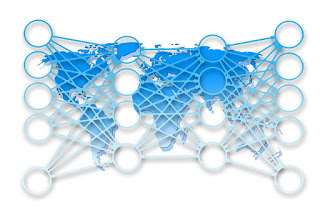 Leverage social collaboration in IT management: Indeed, enterprise social platform provides enriched communication channels and alternative talent pipelines in transforming IT and business. A CIO's responsibility is to understand the business's collaboration needs and innovation pursuit today and into the future. If the CIO and IT take initiatives in driving internal social effort, they may also need to be exemplary to use it in IT management as well, eat your own cooking is part of a CIO's strategy to give everybody in the organization the user experience. A CIO should set the environment for experimentation and learning, find and celebrate innovative things that come up, so he/she can gain effectiveness and productivity and reinvent IT as the innovation hub of the company.
Leverage social collaboration in IT management: Indeed, enterprise social platform provides enriched communication channels and alternative talent pipelines in transforming IT and business. A CIO's responsibility is to understand the business's collaboration needs and innovation pursuit today and into the future. If the CIO and IT take initiatives in driving internal social effort, they may also need to be exemplary to use it in IT management as well, eat your own cooking is part of a CIO's strategy to give everybody in the organization the user experience. A CIO should set the environment for experimentation and learning, find and celebrate innovative things that come up, so he/she can gain effectiveness and productivity and reinvent IT as the innovation hub of the company.
Digital computing and consumerization of IT revolutionize the collaboration within the organization and beyond. Digital business is more open and well-connect with digital clusters and macro-social environment to synchronize employee activities, harness cross-functional collaboration, improving work effectiveness, voice opinions and share collective wisdom, create more inter-connected communication platform to build reputation and accelerate digital transformation.
Follow us at: @Pearl_Zhu
Published on February 10, 2017 23:30



